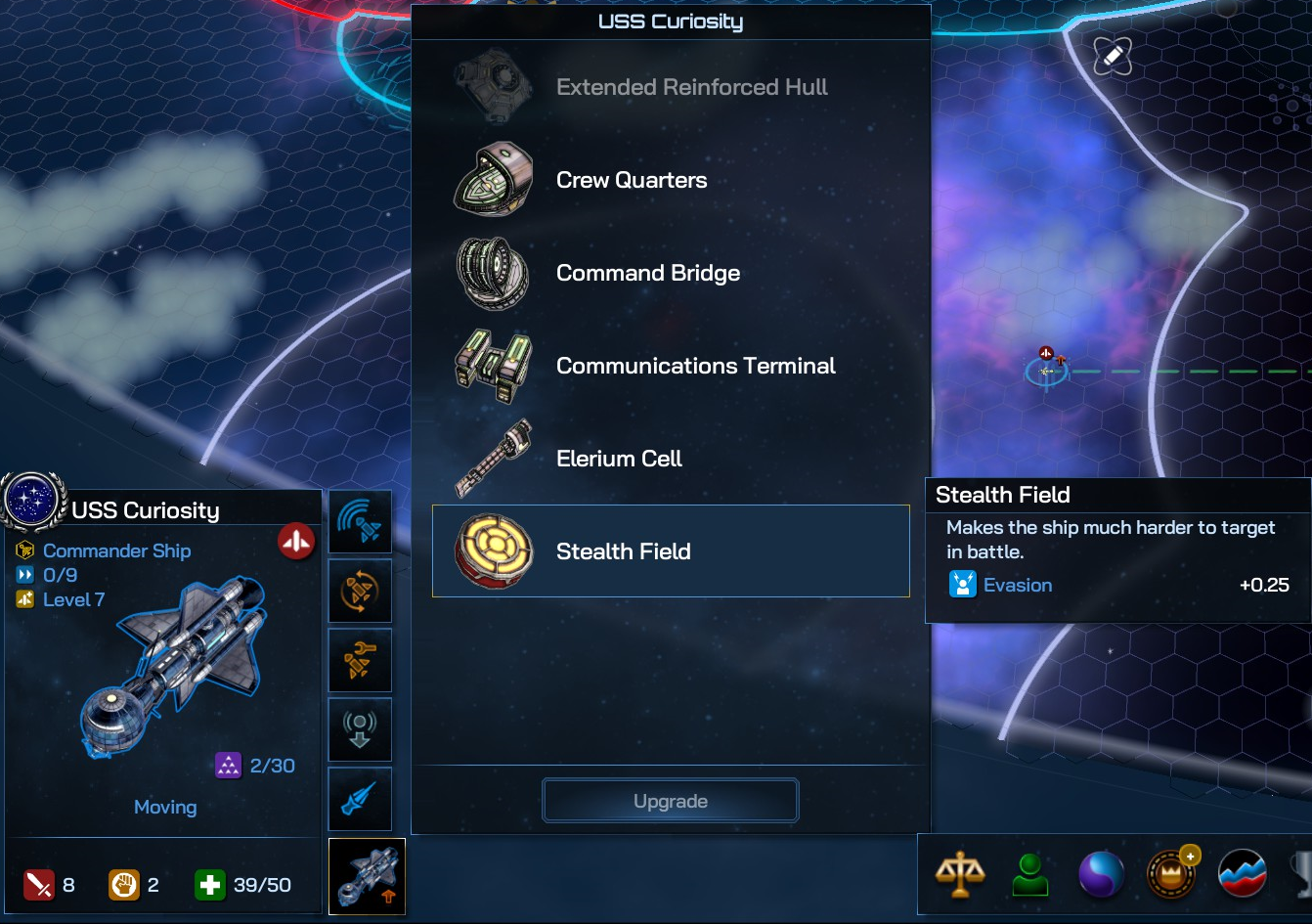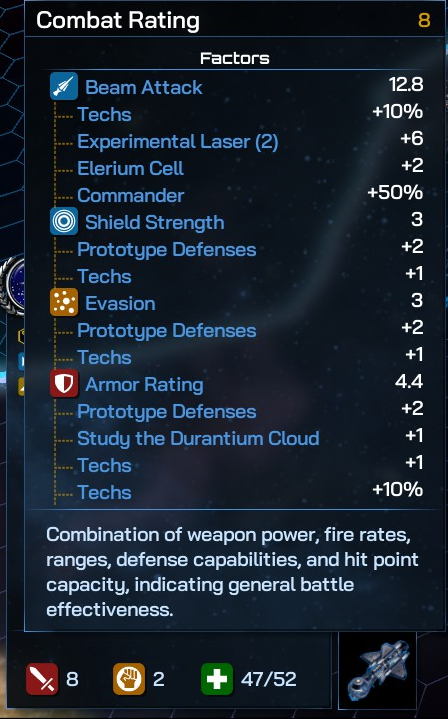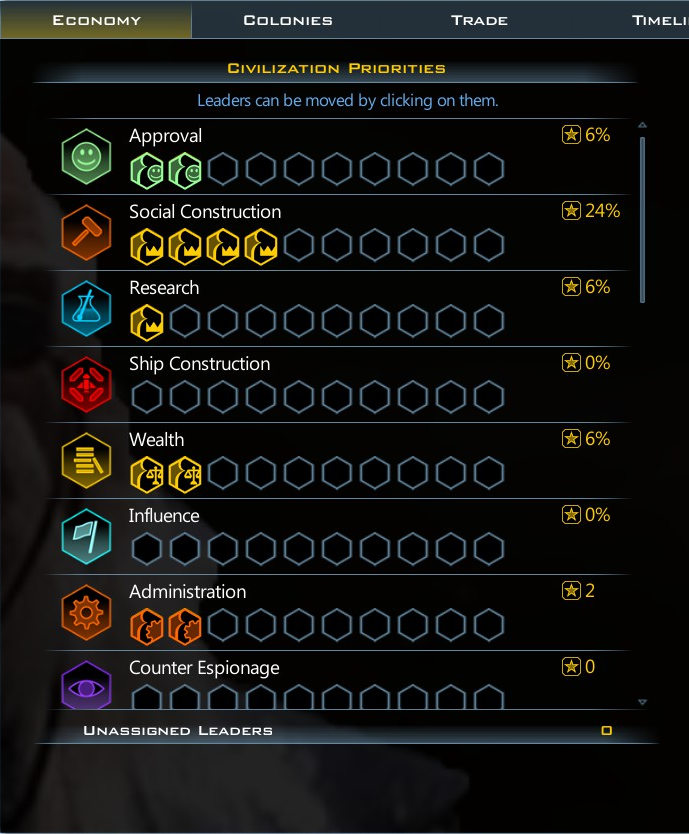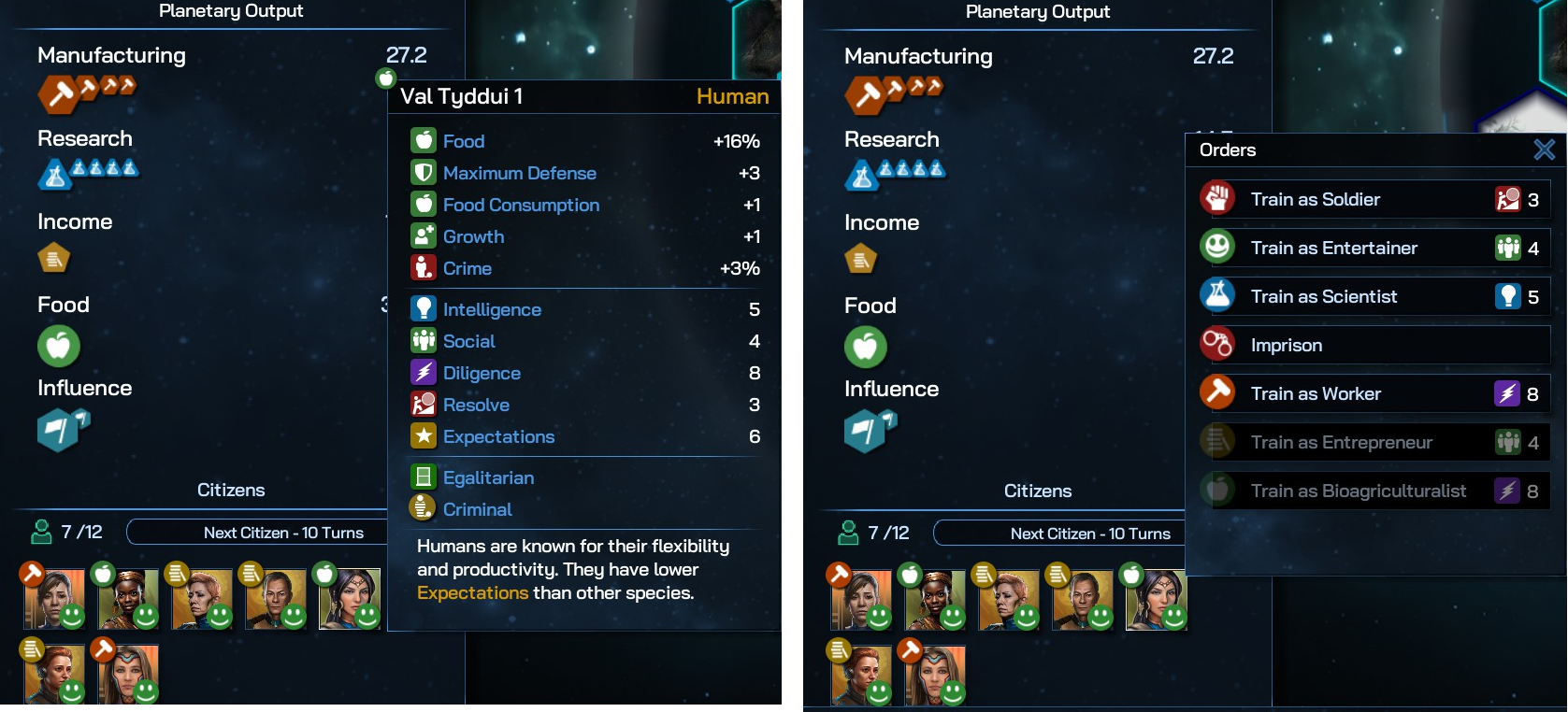Galactic Civilizations 3 vs Galactic Civilizations 4 (PC)

This is long, so if it’s not interesting enough to read all the way through (and it isn’t), maybe when you’re playing GC4 and staring at the screen wondering WTF, bring this up and skip to the appropriate section and hopefully things will be slightly more comprehensible. Note that the comparison is Gal Civ 3 with all the expansions, and the current state of GC4: Supernova, which is at 1.6 as of this writing.

Fleet info from Galactic Civilizations 3 vs Galactic Civilizations 4.
Invasions
In Gal Civ 3 you recruited legions, then built transports and put them onboard. They then got used up over the course of 1 or more invasions, then the transport disappeared (because there were no more legions). So you make your transport and then attack a planet, and then there’s a little map where you can place your legions, then you watch them swarm around until one side or the other is dead.
In GC4, you make transports also, but there are no legions. You just assign a citizen to the new ship, and it’s better if he or she has a high resolve trait because that helps. You also have “siege” ships in GC4 that just shoot at the planet below, basically. They automatically have their “siege” component on board, so don’t worry about that when designing them. I think the siege ships are pretty optional. Anyway, you gather your fleet with a transport and a siege ship or whatever and attack a planet, and it tells you how many months it’ll take to conquer it. At the end of that time, the planet is yours. Neither the transports nor the siege ships seem to get used up, so you can just hop over to the next planet. Not sure if that’s WAI (works as intended) or not.
I played this a little more, and I actually took a class 1-3 planet with just some spaceships shooting at the planet surface. No transports, no siege ships. That’s kinda cool?
Ship battles
In GC3, viewing fleets you could see the three categories of attack and defense. Kinetic attack and armor, missile attack and point defense, and beam attack and shield defense. Those 6 stats plus the fleet hit points were what told you how tough that fleet was. The game would helpfully calculate your odds of winning against that fleet also, so you didn’t have to try to figure out your chances in your head. Move your ship or fleet on top of another ship or fleet, and combat happens.
In GC4, when viewing fleets you see their combat rating and hit points. Combat rating is the combined attack and defensive rating of the ship or fleet. Hover over it and it’ll break down what’s going on for you in a mouse-over display. The game also calculates your odds of winning a battle when you hover over the enemy fleet. You’d think the combat rating would be helpful enough, but at least at this stage, don’t trust CR too much and definitely go with the battle prediction. If it says your CR 8 fleet is gonna die at the hands of the CR 7 one, believe it.

Flagship upgrade options. (Note that I took this pic to highlight a bug, sorta. “Evasion” here means dodging, but in GC4 they also renamed the missile “point defense” to “evasion” as well. That’s different. See the Combat Rating breakdown pic.
You can move your ship or fleet on top of another ship or fleet to fight them, but you have two other options also: beam volley or missile volley. Beam volley has a range of two, missile volley has a range of 4 spaces, so you can engage guys from a distance. You can use these once per turn. Note that if you actually wipe out a ship or fleet this way, you get no experience for your fleet. :/ Still, it’s handy for cleaning up shitty little pirate ships.
One more thing: the rando space bad guys (every map has them, and there’s a slider in the initial game setup to set their frequency) don’t care about your probes, so don’t worry about flying through them. They’re waiting for your unescorted colony ships . . .
Citizens and leaders
In Gal Civ 3, these guys were how you focused your economy, basically. You slowly acquired new leaders over time, and when you did the game notified you and you had the option to train them to be generic “leaders” — able to do any economic job — or “scientists” or “entrepreneurs” etc. They could also become generals, spies, diplomats, or commanders. Commanders get dropped into a fleet and their commander ship appears.
In GC4, it’s a bit more complicated. Leaders are similar to but distinct from citizens. Leaders are recruited and cost money. Also you have only a limited selection although you get new options over time, or you can use an executive order (if you’ve researched the right tech) to invite some leaders to show up. These guys get assigned to your cabinet positions (which give civ-wide bonuses), to ships that need commanders, to factions within your civ that can help you, and to other civs as diplomats (if you want). They are also, crucially, your planetary governors. Any planet over class 5 probably should have a governor on it. Putting guys in your cabinet positions is really critical especially early in the game when your ship range is limited and any bonus there is a help.
Leader loyalty is a big deal for governors, but not an issue for other positions. I feel uneasy about putting disloyal guys in my fancy flag ships, though. But for ministers and whatever, who cares.
Also keep an eye on the tiny badges some leaders have. Some of these are great bonuses and some kinda suck.
Citizens by contrast are guys that appear on your planets. They represent 1 pop cap, so if you have a pop cap of 6 on a planet, you can have up to 6 citizens. These guys get used for colony ships, constructors, troop transports, and for the Prospector prototype ship. Dunno what the strategy is for constructors, but the colony ship guy literally lands on the planet you send them to, and resolve is important for transports and intelligence is important for the prospector. But really, if you randomly put guys on there, it’s fine.
You can also train your citizens to do different jobs, or just leave them in their auto-assigned jobs. This can help focus your planet’s economy. This seems to replace the GC3 mechanic of sending leaders to live on planets and thereby give just that planet significant bonuses. Also, the idea of Administrators from GC3 is gone — planetary citizens do all those jobs since you need them for transports and constructors, and represent a limited but renewable pool.
Leaders and citizens have stats. Intelligence is critical for certain minister or faction jobs, and governors give their planet a +intelligence value% to research.
Diligence gives the ship your leader commands more hit points, and gives the planet they govern a +diligence value% to manufacturing.
Social I think helps with approval on planets. Diplomats also benefit from it.
Resolve improves your leader’s ship’s combat rating, so this is important there. If your civ is the kind that gets revolts and has to put them down, this is probably useful for a governor to have I guess.
Expectations is a thing that reduces a citizen’s overall morale. Leaders don’t have this stat, just citizens.
All of those stats (except expectations) are also needed for certain minister (cabinet) jobs.

Combat rating breakdown
Commander ships and leveling ships up
In GC3, you could have a commander in your fleet, and this was a big deal. The basic commander offered I think 50% bonus to hit points and fleet movement. Wow! You could also make him an admiral and he gave different bonuses, or a privateer for off-the-books warfare, or a survey-type ship I think. All ships (commander or not) gained experience and leveled up, gaining hit points as they advance.
In GC4, you have certain ships (up to 7 I think) that unlock with certain techs. GC4 calls them “flag ships”. These 7 are sets that you pick when you design your civ (if you did that). You drop a leader on one and it appears near your home system. They, along with special prototype ships you unlock through surveying anomalies, and your survey ship(s), are the only ships that can upgrade. As these ships go up in levels, they can acquire new ship parts that, say, extend their sensor range or increase their speed. Or weapons that increase their combat rating. Other ships go up in level still, but they don’t get cool new parts.

Just the leader interfaces from one game to the other. Note on the right the various leader stats, and some have little badges in the upper left. Loyalty is in the lower right.
Upgrading Ships
Another big difference between GC3 and GC4. In previous Gal Civ games, including 3, you could “upgrade” a ship to basically any similar-sized design. So you have a crappy fighter from early in the game and want to turn it into an updated advanced fighter you just designed, that’s an option and it just costs money and a couple turns of inactivity.
GC4 got rid of this. But it’s less of a problem than you might think maybe . . . my old early game fighters and frigates go up in levels and seem pretty decent even later in the game. Also certain techs you research increase your damage for anyone using that weapon type, so even old ships get the bonus. But if they haven’t been fighting, your capacity has improved (the amount of stuff you can put on your ships), and they are just costing upkeep, you can decommission them and make new ones.

GC3 leaders in the economy. GC4 doesn’t use leaders like this anymore.
Planets and planetary improvements
In GC3, you had certain basic buildings — factories, research labs, market centers — that could be built over and over. But these were somewhat de-emphasized from the GC2 days IMO. You mostly (it seemed to me) had one-per-planet guys like the space elevator or rarer ones like the galactic mainframe that you built to increase the manufacturing or research on your planet. Spaces sometimes gave you bonuses, and buildings gave you adjacency bonuses, so positioning these buildings was important. The total planet specialization of GC2 was de-emphasized, although you could still do it. Lots of these improvements cost special resources to make so getting that shit is important.
In GC4, to mirror Stellaris, those repeatable buildings are now “districts” and are just colored tiles. The one-per-planet or one-per-civ (or rarer) improvements are still there, different yet similar to GC3. You generally have way more tiles to work with now because the planet ratings are way higher in GC4.
Virtually all planetary improvements on your core worlds — that is, worlds with governors — offer a % increase to your manufacturing or research or whatever. In GC3, there were some improvements that gave you actual point increases, but those are vanishingly rare in GC4. To increase the point totals that those percentages work against, you can get the little class 1-5 crap planets nearby as colonies. If you put a governor on these, then they don’t add their points to anyone and become core worlds, which doesn’t help in this context and isn’t a great idea anyway. Check out the planet mineral, tech, wealth, etc totals when you mouse over them — this is more valuable information than the class number. In other words, a class 3 planet with a bunch of 0s and 1s there isn’t that great but a class 1 with 3 minerals, say, is pretty good. This is all viewable in the planet screen as well, if you hunt around a little bit. Asteroid mining bases also add to your raw mineral points.
Another way to improve your planet in GC4 is from the map view — not inside the planet view, although it should really be added there too — where you can choose planetary “upgrades” from a little button next to the planet card. Here you can add orbital factories (if you have any, they’re found in anomalies), space elevators, and other stuff. Each planet has a totally random number of possible upgrade slots.
In GC3, morale was a big issue. Keeping your citizens happy wasn’t really difficult but it was a constant concern. If you increase your planet’s pop cap, you better have enough entertainment centers (or whatever) or improve the ones you have to cover it. Too many planets also dropped your civilization’s base happiness level and could create issues — mainly unhappy planets got nothing done and contributed nothing. Maybe they could revolt? I never got to that point.
In GC4, morale hasn’t been much of a thing, at least for human citizens which is what I usually play. Their lower “expectations” stat makes them roll with things I guess. If it does get low, there are entertainment districts and improvements you can add. But now there’s also crime and pollution to worry about. I suppose if I had a pure manufacturing planet AND it was volcanic, I could get the pollution high enough to really make people sad. I recommend not doing that. (Actually, check that, only some species even care about this and humans apparently aren’t on that list. So maybe I don’t know what pollution does.) Anyway, there’s occasional precursor artifacts that you’ll find that can reduce pollution but they’re only good for -10%. Still better than a sharp stick in the eye. Same with crime, it hasn’t been much of a problem, and there are various ways to combat it. I hate making prisons but that’s an option. You can also imprison your citizens if they have the “criminal” tag, but I’ve never felt the need to do that. I send those guys out on constructors and hope that Outland happens. (hur hur)

You don’t move leaders to planets like in GC3 anymore — that was a cool way to specialize a planet. Instead you train your citizens on the planet. I didn’t mention that in my piece there, maybe drop this in at the end of that section. Here’s a pic of your planetary citizens. Also note that the concept of administrators is gone from GC4. You have a limited number of citizens on your planets, and they do all the jobs that administrators did in the old game more or less.
That’s it for now. The other areas of the game I think are similar enough or straight-forward enough to figure out. Ideology is now lots of different progressions instead of just the three in GC3 — benevolent, pragmatic, or malevolent. You now have civilization level policies that you can apply, but just reading the tool tips tells you what you need to know there. I should also mention that you don’t have to keep those policies forever, you can switch them out later if they don’t make sense to have anymore.
I’d say also: definitely don’t ALWAYS just pick one of the three options the research screen gives you. Sometimes you need to get a tech, like hyperwave radio, and it’s not going to be offered basically ever. Don’t wait around for critical techs, get them when you need them. Most of the time, though, one of the three discounted options is A-OK.
Comments? Join us on the forum.
![]() laudablepuss
laudablepuss





